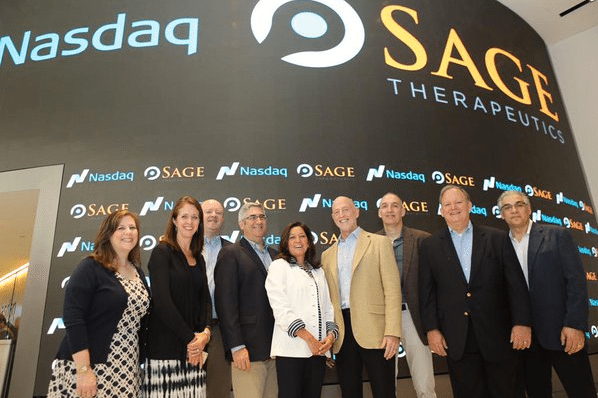
SAGE Therapeutics Inc (NASDAQ:SAGE) just updated markets as to the status of its lead depression study, and the company is up nearly 40% on the data’s release. If its investigation candidate, SAGE-547, can carry through to commercialization, however, these gains are just the beginning of what would likely amount to a multi billion-dollar revaluation of the company. Here’s why.
The mechanism of action (MOA) behind 547 is pretty complicated, and we won’t go in to too much detail about exactly how it works here. Having said that, it’s worth a quick introduction. The human brain has what are called GABAA receptors, which essentially control the signals between neurons. They exist in and around the synapses, which are the ends of the neurons that serve as the site of the signal transmitting. It’s all about chloride conduction, with varying degrees of conduction leading to varying degrees of neurotransmitter (think dopamine, serotonin etc.) release. 547 is what’s called an allosteric modulator of the GABAA receptors. It acts directly on the receptors to alter the impact they have on (at the end of the line) neurotransmitter release.
With the latest trial data, SAGE was trying to prove that 547 could modulate GABAA receptors in such a way that they would effectively cure depression in new mothers – postpartum depression.
As it turns out, it does. Or so the data suggests. Across a 21 patient sample size, 11 patients were given a placebo by way of IV infusion, and 10 were given 547 by the same method. Physicians established what’s called a HAM-D score before dosing, which is a way to measure quantitatively the severity of a patient’s depression. This baseline was then compared to HAM-D scores at, initially, 24 hours post dosing completion (dosing took 60 hours) and then at various points throughout the following 30 days.
The endpoint was this: show that patients in the active arm achieved a higher mean reduction in HAM-D across the period than did those in the placebo arm. As a reference, HAM-D indicates increased severity with an increased number, and for the purposes of this trial, patients needed to have a pre-dosing HAM-D of 26, which is generally considered as severe.
At just 24 hours post dosing completion, the active arm reported a 19-point mean reduction in HAM-D, outweighing the mean reduction reported by the placebo group by more than 10 points. The quality of this result can’t really be overstated. For patients at or around the 26 baseline, this is essentially a complete curing of the condition within 24 hours. Further, the data maintained this improvement (and discrepancy between active and placebo) across the entire 30-day period.
So what’s next? Well, the company has already kicked off a phase II expansion, which it will use to determine the optimal dose of 547. In the just completed trial, doses were titrated based on body weight. It’s reasonable to assume that this data will play into the structure of the expansion in question, and SAGE expects to start enrolling some time during H2. It’s also reasonable to assume that the point of this expansion is to establish a dose with which to carry the drug into a pivotal trial. The just reported sample size (n=21) is very small, and there’s a high likelihood that the FDA will require a much larger study (say 100 patients+) before it will consider an NDA. This isn’t a bad thing, as it offers up plenty of potential catalysts that promise to build on yesterday’s gains ahead of NDA submission.
What are we looking for going forward?
First, any interim from the expansion trial. It’s a quick turnaround trial, so there may not be too much room for interim analysis. If not, top line becomes the data to watch. We’re looking for a similar rate of improvement across the sample, at what the company determines as being the most effective dose.
Beyond that, phase III becomes the focus.
There’s no currently approved treatment specifically for this type of depression, and at least 10% of the four million new mothers each year in the US suffer some from it to some degree. There’s a market, and an unmet need. If SAGE can carry this one through to commercialization, it could have a blockbuster on its hands by, at the very outside, the close of the decade.




